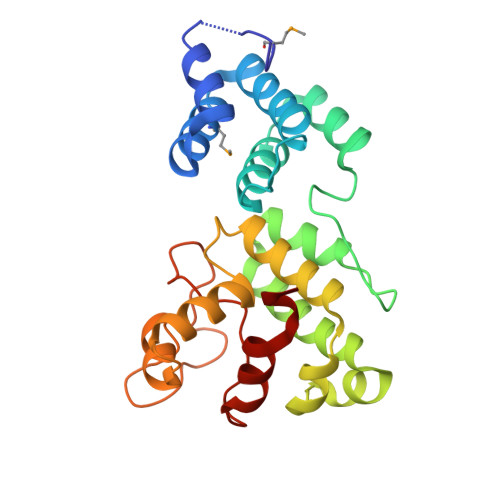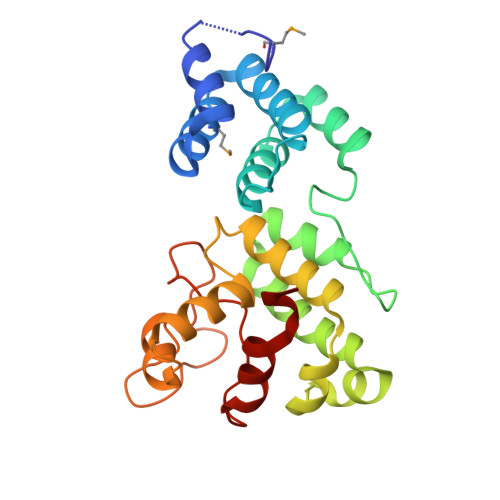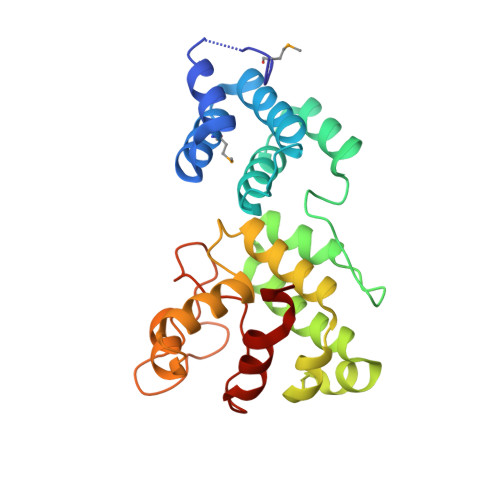Structural and Biochemical Characterization of Gun4 Suggests a Mechanism for Its Role in Chlorophyll Biosynthesis(,).
Davison, P.A., Schubert, H.L., Reid, J.D., Iorg, C.D., Heroux, A., Hill, C.P., Hunter, C.N.(2005) Biochemistry 44: 7603-7612
- PubMed: 15909975
- DOI: https://doi.org/10.1021/bi050240x
- Primary Citation of Related Structures:
1Z3X, 1Z3Y - PubMed Abstract:
Gun4 has been implicated in a developmental signaling pathway between the chloroplast and the nucleus involving magnesium protoporphyrin IX (MgP(IX)), the first dedicated intermediate in the chlorophyll biosynthetic pathway. Here we present the crystal structure of Thermosynechococcus elongatus Gun4 at 1.5 A, describe the binding affinities of Gun4 for substrate and product porphyrin molecules, and identify a likely (Mg)P(IX) binding site on the protein. Kinetic analyses show that Gun4 dramatically increases the efficiency of transformation of porphyrin substrate to metalloporphyrin product and that it also reduces the threshold Mg2+ concentration required for activity at low porphyrin concentration. Gun4 therefore controls magnesium chelatase at physiologically significant Mg2+ concentrations and likely acts as a molecular switch in vivo so that in its absence magnesium chelatase is inactive. This mechanism could allow Gun4 to mediate magnesium protoporphyrin levels both for chlorophyll biosynthesis and for signaling to the nucleus.
Organizational Affiliation:
Department of Molecular Biology and Biotechnology, University of Sheffield, Sheffield S10 2TN, UK.

















